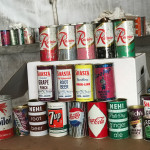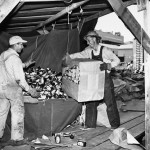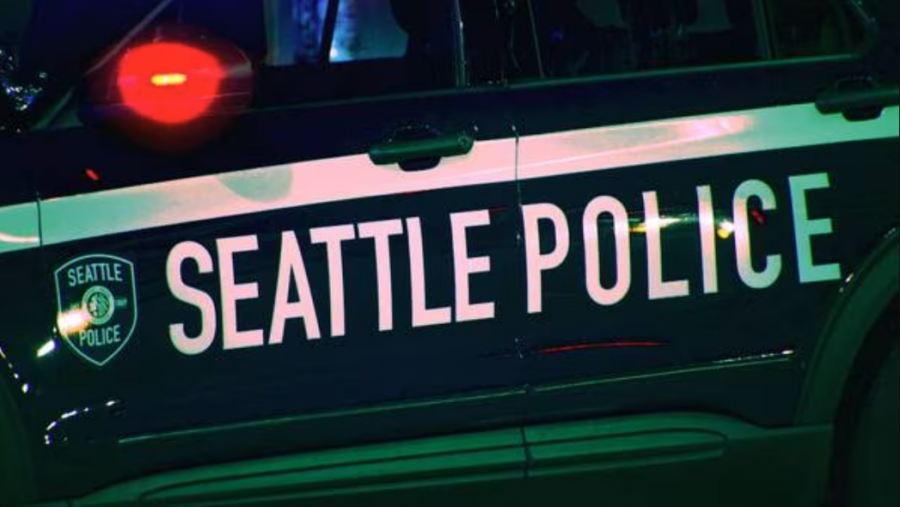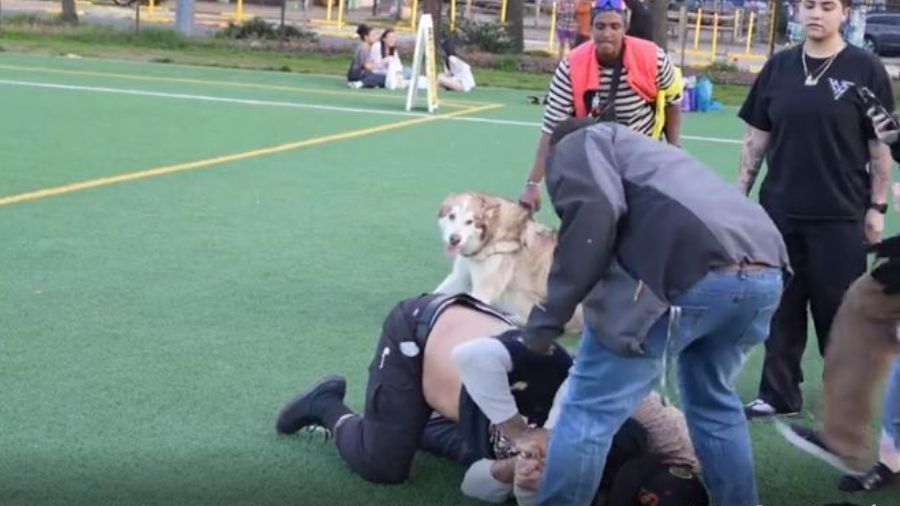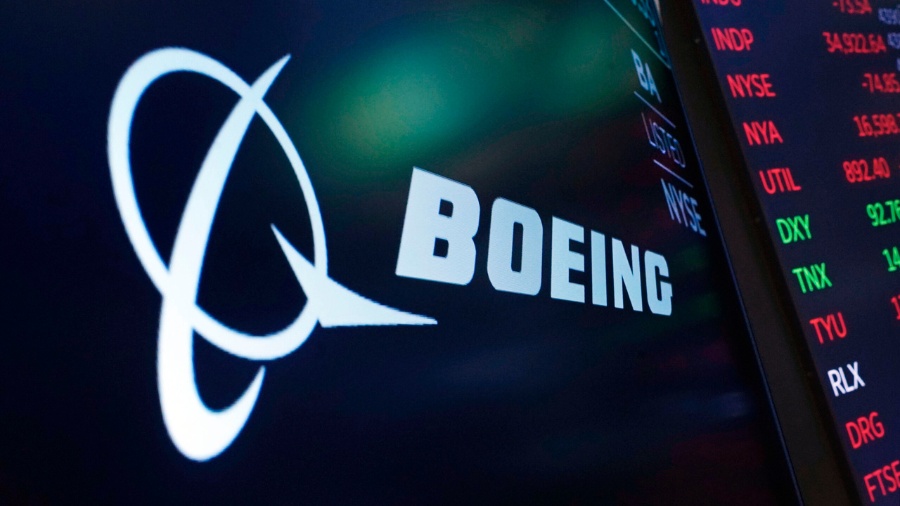Treasure trove discovered in old Boeing wind tunnel
Dec 21, 2016, 5:32 AM | Updated: Dec 23, 2016, 7:06 am
It was a unique facility along East Marginal Way South, where scale models of some of the most futuristic vehicles of the Cold War were put to the test in short bursts of wind up to 3,000 miles per hour.
At the heart of the facility were rugged twin steel spheres, 38 feet in diameter. Each was filled with compressed air, which, when released, simulated conditions of travel above the speed of sound.
Related: Boeing’s Stratoliner begins and ends with a crash
But now that it’s being dismantled, the Boeing supersonic wind tunnel has become something of an inadvertent time capsule, bringing back to life forgotten artifacts of “pop” (and beer) culture.
When they were built in the mid-1950s, those twin spheres were filled with 3 million brand-new tin cans made at a local factory. The cans were lidless, but many were marked with colorful label designs for Rainier Beer, Olympia Beer, Shasta pop, Welch’s grape juice, 7-Up, Pepsi, Nehi, Mobiloil, Bardahl, and others.
Now the old wind tunnel cans are about to become something of a windfall for Boeing, and for a local scrap metal company, as can collectors around the world are already vying to get a piece of the tin action.
Boeing historian Mike Lombardi says that those pristine cans weren’t just dumped there. The cans were put there by design, to help with temperature control in the giant spheres as air was pumped in and then as it rushed out.
Lombardi describes the effect caused by expanding air, on even a small scale.
“You know like the cans you get to clean off your keyboard and that sort of thing? If you hold it down too long, it gets real cold,” Lombardi said.
“Those cans helped to keep that from happening [in the wind tunnel] because if that happened during the test and you had ice in your nozzles, it would destroy the machinery and you’d fail to do your test,” Lombardi said.
Lombardi also says that while the recent discovery came as a surprise to many, it wasn’t exactly a secret that the cans were there.
“There are a few people that knew,” Lombardi said. “When we built the tunnel, I think it was back in 1955 when they opened it up, the Boeing News actually published an article showing the cans being put into the spheres into the tanks.” The Seattle Times also mentioned the cans in articles in 1956 and 1978.
Related: What happened to Flight 293?
One particularly ardent can enthusiast even called Boeing to ask about the tin treasure trove.
“Years ago, I was contacted by a collector who mentioned that, ‘Hey, you know, if you ever tear that thing down, I want to buy some of those cans from you,’” Lombardi said.
But before anyone ever considered tearing it down, for decades the wind tunnel was a critical part of research and development for countless Boeing initiatives.
“The tunnel that they’re dismantling was a supersonic tunnel that was built originally for the Dyna-Soar program, the X-20, which would’ve been like the Space Shuttle . . . but smaller scale,” Lombardi said.
Beyond the Dyna-Soar, which was canceled in 1963, Lombardi reels off a list of other Boeing projects, some famous and some now forgotten, that depended on it, from the Eisenhower era to the Clinton administration.
“The SST was worked on in there, the Supersonic Transport, and then a later version called the High-Speed Civil Transport which was a version of the SST that we were developing in the 1990s,” Lombardi said.
“We did some work for the Joint Strike Fighter, which is now the Lockheed F-35. Boeing competed for that back in the 1990s. That might’ve been one of the last projects done there. The Air Launched Cruise Missile was tested there [before that],” Lombardi said.
When Boeing merged with McDonnell Douglas, the Seattle wind tunnel became redundant.
“They haven’t used it in probably 20 years,” Lombardi said.
As Boeing was demolishing the spheres earlier this year, workers came across the old cans, many of which were still in great condition. The cans had never been filled with liquid, and they originally were transported to Boeing in cardboard boxes to keep them clean. Earlier this year, before the cans could get tossed into what was essentially a giant recycling bin, somebody working on the project wondered if they might be more valuable beyond their worth as scrap metal.
That’s when a Tacoma company got involved.
A worker on the demolition project had snapped a picture of the inside of one of the can-filled spheres. Greg Barrowman of Simon Metals saw it. He was intrigued.
“It was one of the coolest pictures I’ve ever seen,” Barrowman said. “I mean, it was just massive. It was like you were there and just surrounded by this immense wall of historical items.”
Greg Barrowman says antique tin cans are a whole new line of business for the company, where they’ve typically worked with bulk quantities of scrap metal from construction and other industries.
“It’s been quite a significant find for us, and kind of a fun project,” Barrowman said. “And also a money-maker.” Regular scrap steel, he says, sells for about $120 per ton.
Barrowman says they’ve found hundreds of rare and valuable cans, including many varieties of Rainier Beer worth from around $10 to as much as $100 each.
“They each have their own historical value for the condition that they’re in because they haven’t seen the light of day in 62 or 63 years, which is fascinating,” Barrowman said.
Greg Barrowman says that the real treasure from the Boeing wind tunnel is probably what’s considered to be the very first Coke can. Coincidentally, it was in the early 1950s that the beverage manufacturer was expanding beyond offering “The Real Thing” in glass bottles, and starting to use tin cans.
“That particular can itself was the first Coca-Cola can in the history of the United States,” Barrowman said. “It was primarily sent for export to Europe and is marked on the side of the cans, it says ‘Export Only,’ so it was not for domestic consumption. However, the cans that we have are specifically marked for Anchorage, Alaska . . . and these are extremely rare,” Barrowman said. The Boeing horde has so far yielded several hundred examples.
Related: ‘Ghost signs’ uncovered during Capitol Hill post office demolition
Simon Metals and Boeing have an agreement to share revenue from sales of the cans. They’re not yet set up for individual sales of cans, but several collectors and dealers have already been in touch. Barrowman says to check the Simon Metals website for more information as details are worked out.
Back over at the Boeing Archives, Mike Lombardi is planning to add several of the wind tunnel cans to the huge collection of Boeing artifacts he oversees. After all, the cans were once a part of a critical piece of Boeing infrastructure.
Lombardi says he isn’t sure who came up with the plan in the first place to fill the wind tunnel spheres with tin cans, but he says Lockheed had employed similar “technology” previously at a facility in California.
“It’d be kinda fun to figure out who that brilliant engineer was who came up with that idea,” Lombardi said.


